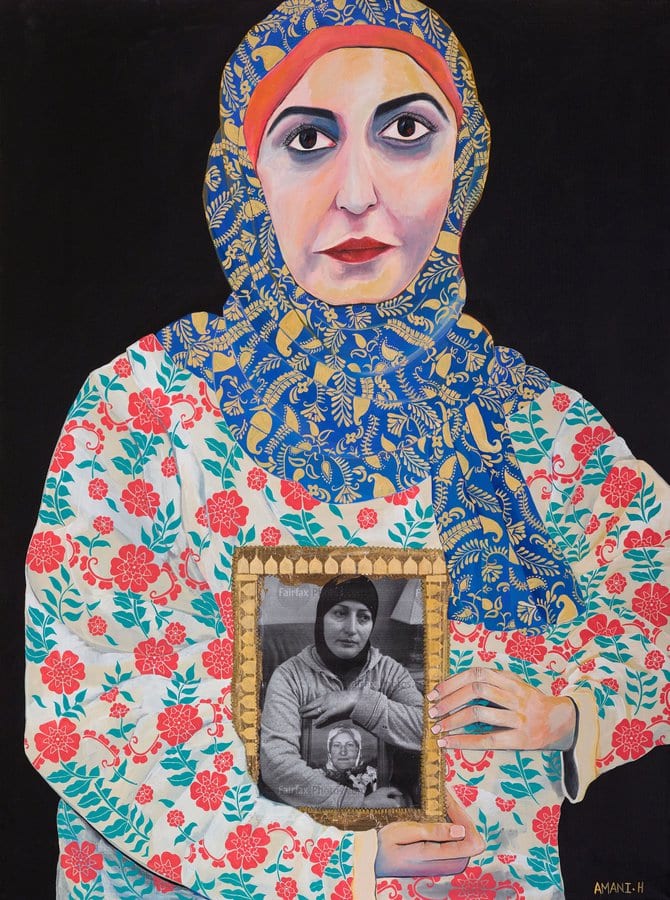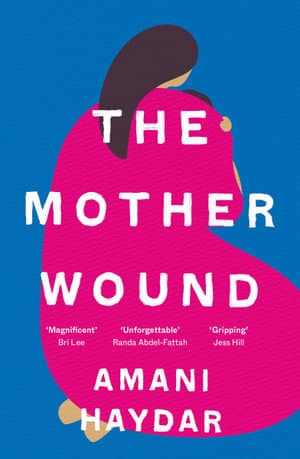Amani Haydar’s fortitude and grace is astonishing. Her book, ‘The Mother Wound’ is a moving testimony which re-appraises Haydar’s childhood in Sydney, registering the anxiety she absorbed from tension in the home and the impact of intergenerational trauma from the war in Lebanon where her grandmother was killed in 2006. However ultimately, the story is in orbit of an unimaginable and horrific event, the murder of her mother.
Salwa Haydar was killed in 2015 by her husband, the author’s father. The attack was extremely violent and happened in front of her younger sister Ola who was also injured as she attempted to stop it and call for help. Haydar, a young lawyer, was newly married and pregnant at the time. She suddenly became a carer for her two sisters while pursuing justice and grieving. This book takes the crime out of isolation and asks us to think about the personal, cultural, political, ideological and legislative conversations we can have to incite change, as the author says ‘Women are dead everywhere. The wounds are everywhere. Everywhere is the time and place.’
‘When Mum was murdered’, Haydar writes, ‘Islamophobes wrote articles that ignored the reality of violence against women in Australia and reduced the incident to a caricature … In these spaces, Mum’s faith rendered her distinct from most of the eighty other women who lost their lives to violence that year.’

Our author underscores that gendered violence is both an issue in the domestic realm as well as at war, noting that sexual violence disproportionately targets women and girls in times of conflict. She shares ‘…enough people now refuse to look away. I am able to adapt because there was enough indignation and understanding in 2015…that her death was reported as domestic violence, that what happened to her was treated as a preventable crime, rather than as an inevitable tragedy or something that existed outside of mainstream Australian culture.’
What we come to see, with the author’s generous and perceptive re-telling of her story detailing her experience with Victims Services, in court, and mourning in sacred places, are the nuances of coercive control and how it can go unrecognised. The title is an important and harrowing meditation on the idea that violence is not only physical, but also mental.
As Haydar writes; ‘Had I known the prevalence of homicides by men without a history of physical violence, I might have made the connections sooner. Had they not been so taboo, so hush-and-move-on, I would have known that what Mum had told me and what I had observed were abuse. Abuse. Abuse. Abuse.’
As she brings her painful story into the light we are reminded that violence occurs in the shadows, in plain sight and that even in re-telling your story there is risk of not being heard. One, among many, reasons to read this book is to be an ally. Haydar has laid the groundwork and with us listening and sharing it further it is a step in the right direction;
‘The best storytelling is that which builds a community and it is, in turn, a communal responsibility to make the space – courtrooms, media, schools, society, safer for stories. That way victims know that they are welcome and supported to reclaim their narrative and thereby reclaim their world.’

‘The Mother Wound’ can be purchased here. If you buy via this link we will receive a small commission.